Around a hundred years ago, two celebrated Gothic architects each began writing ghost stories. One was the young American, Ralph Adams Cram, whose first book Black Spirits and White appeared in 1895, but was sadly never followed by any further similar tales during his remaining forty-eight years—whereas, unlike the much younger Cram, the veteran English architect Sir Thomas Graham Jackson waited until his eighty-fourth year to publish his own sole collection, Six Ghost Stories, in 1919. Although not really a ‘Jamesian’ writer, Jackson is clearly a genuine antiquarian, scholar, and classicist, and his personal love of arcane lore, objets d’art, historic buildings, and Italian antiquities is clearly evident in these traditional post-Victorian ghost stories. During his own lifetime, very few readers knew Jackson as a writer of ghost stories (or any other kind of fiction). He was celebrated as a great ‘New Gothic’ architect, with a special devotion to the Romanesque style. In retrospect he is seen as one of those pioneers who strove to loosen the bonds of rigid medievalism in the belief that by doing so a living Gothic style, capable of gradual development, would take the place of one that was bound by archaeology, and for which they felt there could be no future. An inveterate traveller, and pursuer of antiquities, he virtually rediscovered Dalmatia as far as its art and history were concerned. A brief résumé of his incredibly busy life and achievements will reveal the unique personality behind the long-neglected collection of Six Ghost Stories.
Thomas Graham Jackson was born in Heath Street, Hampstead on 21 December 1835, son of Elizabeth (daughter of Thomas Graham Arnold, M.D.) and Hugh Jackson, a solicitor. Elizabeth’s grandfather, Dr Thomas Arnold, was a pioneer in the rational and humane treatment of lunatics, and wrote a book on insanity which is mentioned and praised in Boswell’s Life of Johnson. Art and architecture became Jackson’s greatest interest while still a young boy. In his memoirs he recalled that from his earliest days, ‘I was always drawing imaginary cathedrals and modelling buildings in cardboard or cork . . . Mr Herbert Evans, our doctor at Hampstead, so often mentioned with affectionate regard by Constable in his letters, was a medieval enthusiast and he inspired me with a fancy for rubbing brasses, from which I learned a good deal about Gothic detail’. As Harrow was too expensive for the family budget, the fourteen-year-old Thomas went instead to a newly-opened public school, Brighton College, in 1850. He matriculated at Corpus Christi, Oxford in 1854, and later the same year was awarded a scholarship at Wadham College. He graduated in 1858 with a third class in Literae Humaniores, and was elected to a non-resident fellowship at Wadham in 1864. Following college custom, he lost this fellowship on marriage, but was made an honorary fellow in 1882. From 1858 to 1861 Jackson was a pupil of George Gilbert Scott, the controversial architect largely responsible for the mid-Victorian Gothic Revival, whose best known works in London during the 1860s and 1870s included the Albert Memorial, the Foreign Office, and St Pancras Station. Jackson was strongly influenced and captivated by John Ruskin’s Seven Lamps of Architecture, while The Stones of Venice ‘fed the passion for Italy and Italian medieval art which had been fostered by a study of the Pre-Raphaelites. The land of poetry and romance, of marble and mosaic and precious inlays and sculpture, of swelling domes and basilicas with long-drawn colonnades of luscious hues, became the object of my desire, the fancied goal of my travel, which, however, I was not destined to reach for some years to come’. These Italian Renaissance and Romanesque motifs were regular hallmarks of his style during the following decades.
Jackson branched out as an independent architect in London in 1862. Many of Jackson’s greatest architectural creations can be seen at Oxford, Cambridge, and numerous public schools. ‘No other man has altered the appearance of Oxford in modern times so greatly as Jackson’, declared H.S. Goodhart-Rendel in the Dictionary of National Biography. Jackson’s immensely productive thirty-five years of work in Oxford began with his success in a competition limited to five architects for the design of the New Examination Schools, the foundations of which were laid in 1876, and the largest of all his constructions in that city. ‘I seemed to have become the fashion’, declared Jackson. It was almost a standard byline: whenever an Oxford college needed restoration or extension, there was rarely any debate on who should undertake the job, with regular demands for ‘Jackson, of course!’. He was architect of the Grove Buildings at Lincoln College (1882), the new buildings at Trinity College (1883–7), the restoration of the chapel at Oriel College (1884), the annexe at Corpus Christi College (1884–5), the new buildings at Brasenose College (1886–9 and 1909–11), new buildings at Hertford College (1887–90 and 1903–13, including the new chapel finished in 1908), the remodelling of the spire of St Mary’s church (1893–6), the refitting of All Saints’ Church (1896), and the restoration of Wadham College (1900–8). He also designed a Tutor’s House in Mansfield Road for Balliol College, the circular tower in the grounds of the Radcliffe Observatory, the new Radcliffe Library, and a small block of buildings at Somerville College; and also did much restoration work at the Bodleian Library. In Cambridge, he designed the new Sedgwick Memorial Museum, Archaeological Museum, Physiological and Psychological Laboratory, and new Law Library and Law School, together with important restoration work at King’s College (where he may have been acquainted with M. R. James during the 1890s). He also built many new buildings for the following public schools: Eton, Westminster, Rugby, Harrow, Radley, Uppingham, Aldenham, Cranbrook, Sandwich, Brighton, and Giggleswick. Jackson’s new buildings at his old school, Brighton College, were decorated with distinctive flint walling mingled with terra-cotta dressings; and the chapel of Giggleswick School was widely considered to be his outstanding achievement in buildings connected with schools.
Long delayed public recognition came when Jackson was elected A.R.A. in 1892, and R.A. in 1896. He was created a baronet in the 1913 New Year’s Honours List. Rather than settling down to a quiet retirement at the age of seventy-seven, Jackson decided to become a full-time writer, embarking upon a series of architectural histories, amounting to seven large volumes, all published by the Cambridge University Press. For relaxation, Jackson wrote and illustrated another travel book, A Holiday in Umbria, with an account of Urbino and the Cortegiano of Castiglione, for John Murray in 1917. It was the successful publication of this book that led directly to the unexpected appearance of Six Ghost Stories from the same company as their seasonal ‘Christmas book’ in 1919. Like M. R. James and other antiquaries of that era, Jackson devised these tales purely for the enjoyment of a select few close friends, in addition to his two sons, and he was greatly flattered (and possibly quite astonished) when he was urged to preserve them in print for a much wider public. The collection was published by John Murray in grey cloth with a simple design of four small bats symmetrically placed around the edge of the front cover, where the author’s name is credited simply as ‘T. G. Jackson’. On the title-page his name was given in full as ‘Sir Thomas Graham Jackson, Bt., R.A.’, and the dedication to his two sons (H.N.J et B.H.J.) is typically printed in Latin. The colourful pictorial dustjacket shows the pivotal scene from ‘The Ring’, with Chiarina standing before the intimidating image of Typhon, ‘with twisted serpents for legs, and outstretched wings, grasping a thunderbolt as if to hurl it at an intruder’. This illustration is unsigned, but it would not be surprising if it was drawn and painted by the author himself.
‘The Ring’ is set in Tuscany, which Jackson had often visited and explored for antiquities, and shows a clear knowledge of the region’s local customs and superstitions. ‘Pepina’ also features two friends travelling in a remote part of Italy, one being an esteemed knight (or baronet) whom one hopes has no connection to the author. ‘The Lady of Rosemount’, ‘The Eve of St John’, and ‘The Red House’ are all set in historic country houses, a favourite setting of this period’s ghost stories, with the setting of the last tale evidently based closely on a real Jacobean manor situated near London. In ‘The Lady of Rosemount’ the character of Sir Thomas seems to be virtually a self-portrait, especially while admiring the statue and saying ‘I have never seen anything finer either here or in Italy . . .’; while ‘A Romance of the Piccadilly Tube’ is among the earliest ghost stories featuring the London Underground. Jackson himself probably thought that his only fictional work would never survive, and this book is the only title deliberately omitted from his otherwise complete Who’s Who entry. There is no reference to any ghost stories (or their likely sources) in his memoirs. He has been consistently ignored by anthologists, with the single exception of Hugh Lamb, who reprinted ‘The Lady of Rosemount’ in both The Thrill of Horror (1975) and Terror by Gaslight (1992). In the ‘good old days’ of book collecting (before 1980), Six Ghost Stories was quite a cheap and easy book to find, and dozens of copies must have passed through various hands during the 1970s. But now this title (like so many others of similar vintage) seems to have disappeared completely from catalogues of rare booksellers.
Apart from his profuse writings in old age, Jackson kept busy during the First World War, his most important work of this period being the restoration of Holy Trinity Church at Coventry, where the tower and transepts were underpinned. Every Sunday, in spite of his eighty years and increasing infirmities, he used to rise very early in the morning and make the arduous journey from his home, Eagle House in Wimbledon, to the White City at Shepherd’s Bush, where he spent the day as an ordinary munitions worker. After the war, he dealt with a great number of commissions for memorials. His last weighty book, comprising thirty-four chapters in 336 pages on the history of architecture, was completed during a lengthy illness shortly before his death. Sir Thomas Graham Jackson died in London aged eighty-eight on 7 November 1924, and was succeeded as second baronet by his elder son, Hugh Nicholas (who was similarly long-lived, dying in 1979 aged ninety-eight). Hugh’s son, the third baronet, Sir Nicholas Jackson, is a renowned organist, harpsichordist, and composer, and has been director of the Concertante of London since 1987. His son, the future fourth baronet, is Thomas Graham Jackson, named directly after the illustrious first baronet. Basil Jackson, the second son of Sir Thomas, arranged and edited his father’s memoirs (begun in 1904, but hitherto unpublished), which were eventually issued by Oxford University Press in 1950 under the title Recollections of Thomas Graham Jackson. This fascinating volume covers his life up to 1913, and is embellished with many of his own humorous sketches and illustrations, including a pictorial rebus letter to his son, signed ‘your loving friend, Tom Scribbler’. Readers of these memoirs will be continually impressed by the humour, gentle kindliness, and charm of this very scholarly, learned, and much loved man. In his final authoritative volume, Architecture, published posthumously by Macmillan in 1925, Jackson summed up his heartfelt opinions on this subject as follows: ‘As prose rises to poetry by the greater elevation of thought, the finer flow of language, the touch of sympathy, grace, and pathos, so does Building pass into Architecture with the superior grace of the main forms of the fabric, perfect expression of the conditions of the construction, and closer harmony between purpose and achievement. In a word: Architecture is the poetry of construction’.





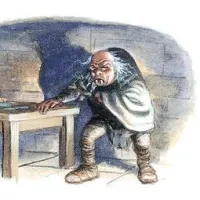


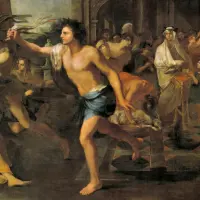
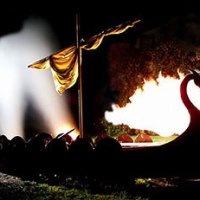

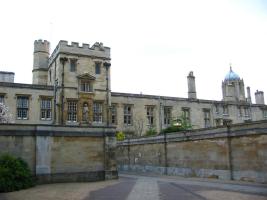


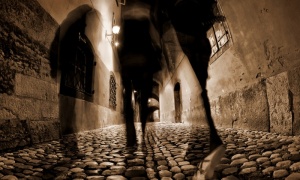


One Response to “T G Jackson – Architect of the Gothic”